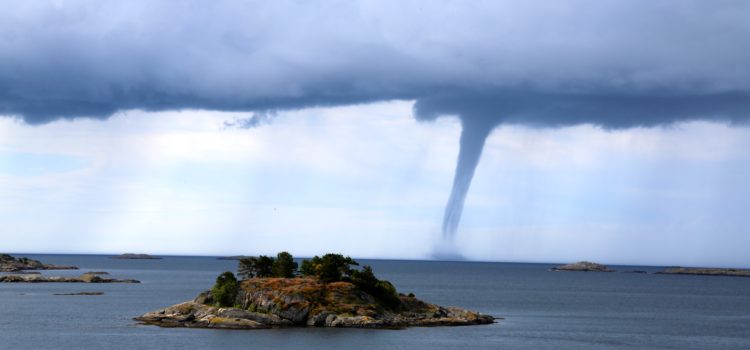

This article is an excerpt from the Shortform book guide to "Endurance" by Alfred Lansing. Shortform has the world's best summaries and analyses of books you should be reading.
Like this article? Sign up for a free trial here .
What happened on Elephant Island while Ernest Shackleton fulfilled his rescue mission? Who was in charge on Elephant Island?
After the Endurance ship sank, Ernest Shackleton and his crew headed to Elephant Island. There, Shackleton put Frank Wild in charge as they awaited rescue.
Continue reading to find out what happened on Elephant Island, Ernest Shackleton’s plan for rescue, and how long the crew was on the Island.
Arriving at Elephant Island
Alfred Lansing’s book Endurance describes the final rescue mission led by Ernest Shackleton. Elephant Island was some of the men’s final destination on the expedition on April 15, 1916. This was 497 days after they were last on firm land and eight days rowing through the ice. As they landed, several men collapsed in exhaustion and pain. One had a heart attack, and three were unable to walk. Despite those difficulties, Lansing explains that they were elated to be on land. There was plenty of wildlife on the island, so they could finally hunt and eat fresh food. There was also a glacier where they could collect ice to melt for drinking water.
(Shortform note: The crew could reach Elephant Island thanks to the island’s mountain peaks, which they could spot even in severe weather. The island also looks like an elephant’s head. The island’s name might come from that characteristic shape, or its elephant seal population. Some even claim it comes from the Endurance crew nicknaming it “Hell-of-an-island.”)
Making a Plan for Rescue
After taking time to rest, Shackleton announced on April 20 that he would take five men and the largest boat and sail 800 miles to South Georgia Island to find rescue.
Before leaving, Lansing recounts that Shackleton had long conversations with his second-in-command, who would stay on the island, so the man would know exactly what to do in any situation. Shackleton left a letter in his diary, passing responsibility to him for the camp, the men, and the boats. Shackleton also left a letter in the photographer’s diary, bequeathing him all rights for the photographs taken during their expedition, if Shackleton didn’t survive. (Shortform note: The photographer was the Australian Frank Hurley and his photographs are striking records of their incredible adventure.)
As soon as the weather became milder, they got the biggest boat ready. On April 24, Shackleton and his smaller crew sailed away as the rest gave them three cheers from the shore.
(Shortform note: Shackleton’s second-in-command was Frank Wild, an experienced polar explorer who had joined him in a previous expedition. In Wild’s diary, he wrote that after sending Shackleton off with three cheers, he saw some of the men with tears in their eyes. Seeing this, he immediately put them all to work. To keep the men busy and entertained, he organized daily hunting expeditions and nightly sing-alongs.)
Waiting for Rescue
The men who stayed on Elephant Island worked hard under Wild’s leadership to make their living situation more comfortable. They built a hut using the boats and set up lights for reading and a place for indoor cooking. There was a flagstaff on the highest accessible point of the island that they built. They settled into a new routine on the island peppered by daily bickering but no real arguments.
The men spent much time discussing what they would eat if they could choose, and one of them even conducted a poll on the issue, which made it clear there was a general hankering for sweets. (Shortform note: Lansing took care to list the answers each man gave to the poll, including various types of pudding and cream.)
Meanwhile, the two surgeons on the crew took care of the sick men and even performed two surgeries. These included amputating the toes of the man who had suffered from severe frostbite.
Every day, they climbed to the highest point of the island to observe the horizon. They hoped to see their rescue ship coming. However, Wild convinced them not to expect rescue before August 15.
With that date in mind, they prepared to spend winter on the island. Temperatures began dropping and the sun was now only visible for about six hours a day. As the weather deteriorated, the glacier on the island cracked often, dropping enormous chunks of ice into the water and causing the beach and their hut to flood. They started referring to their hut as a sty because it was always wet, and food remnants as well as penguin guano pooled on the floor; it was impossible to clean up.
August 15 came and went, and there was still no rescue. But on August 30, 1916, Shackleton arrived on Elephant Island where all 22 men were still alive.
(Shortform note: This was not the only time that Frank Wild took over a leadership role from Shackleton. On Shackleton’s last expedition in 1921, Wild was once again second-in-command. When Shackleton tragically died halfway to Antarctica, Wild became the leader of the expedition and completed it. On their way back to Europe, he took the ship near Elephant Island to see the familiar shore where he had led 21 stranded men for four months. Another former member of the Endurance crew was with him, and he later wrote “Once more I see the old faces and hear the old voices—old friends scattered everywhere. But to express all I feel is impossible.”)

———End of Preview———
Like what you just read? Read the rest of the world's best book summary and analysis of Alfred Lansing's "Endurance" at Shortform .
Here's what you'll find in our full Endurance summary :
- The story of the Endurance, an expedition ship that sunk on its way to Antarctica
- The crew's journey of survival and their search for rescue
- How Ernest Shackleton lead the crew to safety






